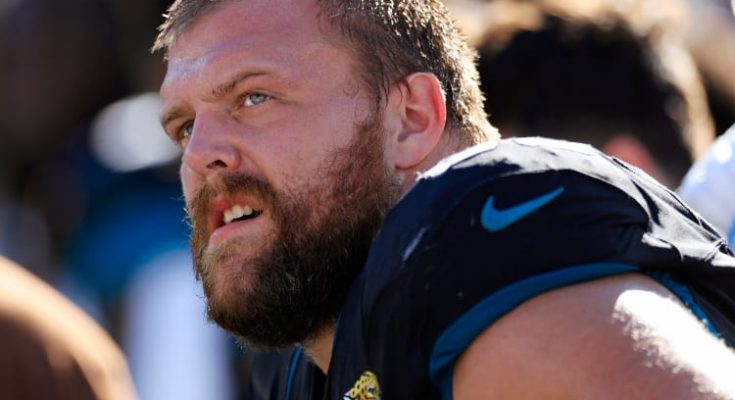Bengals fans were left in disbelief this offseason after discovering that the most coveted free agent guard they had hoped to sign quietly retired earlier this year, largely unnoticed by the media and general public. The unexpected retirement has left a void in the team’s plans and sparked a wave of reactions across social media, forums, and fan communities, with many expressing frustration over what they see as a missed opportunity to strengthen an already talented roster. The guard, who had long been on the radar of several teams in need of interior offensive line support, had been widely discussed in speculative trade and signing talks throughout the early months of the offseason. Yet, while rumors and headlines focused on other big-name free agents, this player’s decision to step away from the game flew under the radar, catching both fans and analysts by surprise.
The timing of the retirement was particularly striking. The player chose to announce his departure quietly, with no fanfare, press conference, or extensive media coverage. This approach left many Bengals observers unaware that the opportunity to acquire a top-tier guard had effectively vanished. For a team that has consistently prioritized protecting quarterback Joe Burrow and fortifying the offensive line, this development represents not just the loss of a potential upgrade but also a chance to alter the team’s strategic trajectory in significant ways. Analysts have noted that adding a guard of this caliber could have shored up weaknesses in pass protection and run-blocking schemes, giving Burrow even more time to operate and the offense more flexibility to execute high-level game plans.
The player in question, a veteran known for his combination of agility, strength, and technical prowess, had been on many teams’ wish lists. His reputation for consistency and leadership on and off the field made him an appealing candidate not only for performance improvements but also for mentoring younger players within a team’s offensive line unit. For the Bengals, whose offensive line has seen its share of ups and downs over recent seasons, securing such a player would have been a strategic coup. Fans had long speculated that the front office was eyeing this guard as a top priority, and social media conversations frequently included calls for aggressive pursuit once the free agency window opened.
Despite the widespread anticipation, the guard’s quiet retirement has prompted a mixture of reactions. Some fans have expressed disappointment and frustration, arguing that the Bengals front office should have acted more decisively or maintained closer contact with key free agents. Others have taken a more philosophical approach, acknowledging that player retirements are part of the game and that teams must adapt quickly to unexpected developments. Regardless of perspective, the sudden absence of this player has reshaped the offseason narrative, forcing the Bengals to explore alternative solutions to bolster the offensive line.
From an analytical standpoint, the retirement of this high-profile guard underscores the challenges NFL teams face in managing free agency. Teams often operate under the assumption that top targets remain available until they formally sign elsewhere. However, unannounced retirements like this one introduce a variable that can disrupt planning, forcing teams to pivot strategies at the last minute. The Bengals’ situation serves as a case study in the importance of proactive roster management, contingency planning, and maintaining multiple options when pursuing critical free agents. Scouts and front-office executives must continually assess the availability of talent and the likelihood of unexpected developments to avoid such blindsides.
For the fans, the impact is more emotional than tactical. Bengals supporters had built up expectations around the possibility of signing the veteran guard, envisioning how his presence could transform the offensive line and improve overall team performance. Fantasy discussions, mock roster predictions, and season projections had all included him as a key figure, and his sudden absence has required fans to recalibrate expectations. Social media platforms were quickly flooded with reactions ranging from disbelief to humor, with memes and commentary highlighting both the shock of the quiet retirement and the perceived “missed opportunity” for the Bengals.
Media analysts have also weighed in, noting that this development may force the Bengals to reconsider their approach to the offensive line in upcoming drafts and free agency periods. Without the opportunity to secure this particular veteran, the team may need to explore younger talent with longer-term potential or pursue less heralded free agents who still possess the skills necessary to contribute immediately. Draft evaluations, trade rumors, and scouting reports are likely to become central talking points as the Bengals seek to fill the void left by the retired guard.
There is also an element of timing and strategy involved in how the retirement unfolded. By stepping away quietly, the player avoided generating pressure from multiple teams vying for his services or entering protracted negotiations that could have dragged on into training camp. This decision, while surprising to fans and analysts, reflects a calculated approach to career closure, allowing the player to exit on his own terms without public scrutiny or external demands. For teams like the Bengals, this emphasizes the delicate balance of anticipating player intentions, understanding motivations, and maintaining open lines of communication throughout the offseason.
Interestingly, the guard’s retirement also has ripple effects beyond the Bengals. Other teams that had expressed interest or were monitoring his availability are now forced to adjust their strategies as well. The sudden disappearance of a top-tier free agent creates a domino effect, influencing the free agent market and the decisions of multiple organizations as they scramble to identify replacements. In many ways, this quiet retirement has reshaped the landscape for offensive line acquisitions, prompting both strategic recalibration and urgent decision-making across the league.
The human element of this story should not be overlooked. Fans often attach expectations, hopes, and narratives to individual players, imagining how their contributions might influence outcomes, team culture, or even the trajectory of a season. The quiet retirement of a highly sought-after guard challenges those assumptions, reminding everyone that players make decisions based on personal, professional, and health considerations that may not align with fan expectations or media speculation. While disappointment is natural, it also highlights the unpredictable nature of sports, where planning and preparation must constantly adapt to unforeseen circumstances.
From the front office perspective, this moment represents both a challenge and an opportunity. While the retirement removed a high-profile option, it also forces the Bengals to evaluate other internal talent, pursue alternative free agents, and potentially look deeper into the draft for solutions. Effective management in situations like this can differentiate successful teams from those that struggle to adapt. Front office personnel must quickly assess the impact of the retirement on roster depth, salary cap implications, and positional priorities, all while maintaining focus on broader strategic objectives.
Looking ahead, the Bengals’ offensive line strategy will likely be a major talking point as training camp approaches. Analysts will scrutinize the team’s moves, evaluating how effectively they address gaps left by the retired guard. Fans will continue to debate potential signings, draft picks, and trade possibilities, often referencing the “what if” scenario surrounding the guard who quietly retired. This ongoing discussion underscores the importance of transparency, communication, and agile decision-making in the modern NFL, where even a single player’s departure can ripple across multiple facets of team planning.
In conclusion, the quiet retirement of the most coveted free agent guard the Bengals had hoped to sign has generated shockwaves among fans, analysts, and league observers alike. It serves as a reminder of the unpredictable nature of professional sports, where even the best-laid plans can be disrupted by sudden, unexpected developments. For the Bengals, the loss represents both a challenge and an opportunity—a challenge to adapt quickly and fill the void left on the offensive line, and an opportunity to explore new avenues for roster improvement. For fans, it is a moment of reflection, disappointment, and renewed anticipation as they await the next move from the front office. The story also highlights the broader lessons of NFL roster management, illustrating how teams must balance preparation, flexibility, and foresight to navigate the ever-changing landscape of free agency. Ultimately, while the quiet retirement slipped under everyone’s radar, its impact on the Bengals, the fanbase, and the league as a whole will continue to be felt well into the coming season, shaping discussions, strategies, and expectations in ways that only professional football can inspire.



